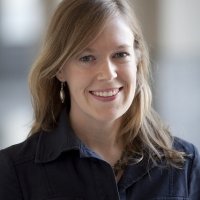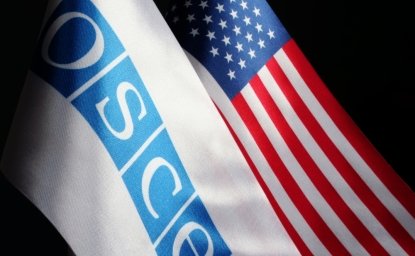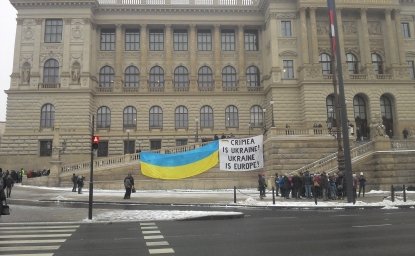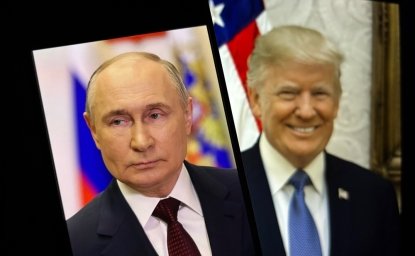Russian Orthodoxy Resurgent: Faith and Power in the New Russia

"The Russian Orthodox Church has re-branded itself as the repository of Russian patriotism," said John Garrard, Professor of Russian Studies, University of Arizona, and former fellow, Woodrow Wilson Center, at a 20 October lecture at the Kennan Institute on the growing influence of Russian Orthodoxy in Russian society. John Garrard and Carol Garrard, independent scholar and author, Tucson, Arizona, identified the formal beginning of the resurgence of Orthodoxy in Russia to the summer of 1987 when the then Russian Patriarch Pimen and the patriarch from Constantinople formally met in Moscow for the first time in almost 400 years. As described in the Garrards' recently published book, Russian Orthodoxy Resurgent: Faith and Power in the New Russia (Princeton University Press, 2008), this meeting started a radical transformation in Church-State relations that began under Mikhail Gorbachev and accelerated in post-Soviet Russia.
The Garrards focused on three major events in 1990 as a means to describe the expansion of the Russian church and its current position in Russian society. The first development concerned the passing of the 1990 USSR law on freedom of conscience and religious organizations, which Professor Garrard argued was perhaps the high point of Gorbachev's campaign for perestroika and glasnost. This law declared all faiths and religious denominations equal under the law and mandated freedom of conscience. Professor Garrard pointed out, however, that the law unexpectedly led to the opening of the floodgates of Western Christian evangelists and missionaries. The Orthodox Church subsequently lobbied against the 1990 law and in 1997, in an effort to curb Western proselytizers, the Duma passed a new law on freedom of conscience and religious organizations. While recognizing Russia as a secular state, the 1997 law granted a more privileged place to Orthodoxy, recognizing the Church as "coterminous with the State from its very beginnings and as an essential ally in the formation of an independent Russia." This 1997 law made it quite difficult for foreign Christian groups to officially register and to proselytize, although the Duma—at the Church's insistence—declined to make Orthodoxy the official state religion. Professor Garrard noted that the passing of the 1997 law emboldened the Russian Orthodox Church to strengthen its position in Russian society through the use of "soft power." While later attempts to introduce Orthodoxy curriculum into state schools failed, the Church nevertheless has established its own thriving network of schools and seminaries.
The Garrards identified the discovery in 1990 of the remains of St. Serafim of Sarov (1759-1833), a Russian ascetic hermit, as the second major event in Russia's religious revival. A veritable cult formed around Serafim upon the finding of his bones. This new enthusiasm culminated in the Russian Orthodox Church declaring 2003, the centenary of his canonization, to be the "Year of St. Serafim." Professor Garrard explained that Russia's present-day reverence for St. Serafim is partly due to his relationship to the last Tsar and his murdered family, as well as his prediction that Russia would overcome its humiliation as a nation and rise to greatness once again. The return of the relics of St. Serafim, argued Professor Garrard, came to symbolize the broader themes of restoration and renewal of the Russian Church.
Finally, the election of Alexy Ridiger as Patriarch Alexy II represented the third event in 1990 that cemented the new relationship between Church and State in Russia, according to John and Carol Garrard. Prior to the break-up of the Soviet Union, Alexy II worked for the KGB, an experience which the Garrards suggested made for a smooth relationship with another prominent former KGB agent, former President Vladimir Putin. Professor Garrard stated that one of the first things Alexy II did as Patriarch was to fight for the return of Church real estate, art, and relics from the state. More importantly, Alexy II played a significant role in the August 1991 coup by invoking the power of the Church against the coup plotters. At the height of the August 1991 crisis, Alexy II made a direct appeal to the Army: "We call upon the whole of our nation, and particularly our army, to show support, and not to permit shedding of fraternal blood." Since this crucial turning point, Professor Garrard noted, Alexy II has served as a critical conciliatory figure in Russian society.
In summary, the Garrards argued that the interplay between the above three events—the law on freedom of conscience, the rediscovery of the relics of St. Serafim, and the election of Alexy II—transformed the face of Russia. These events ultimately enabled the Church to forge a special relationship with the Russian state without subjecting itself to direct state control. While actual church attendance remains stagnant, noted the Garrards, the Church still has been able to attract large numbers of volunteers to repair and restore its buildings and relics. For an increasing number of Russia's citizens, concluded the Garrards, being Orthodox and being Russian are one in the same.
Author

Kennan Institute

Kennan Institute
After more than 50 years as a vital part of the Wilson Center legacy, the Kennan Institute has become an independent think tank. You can find the current website for the Kennan Institute at kennaninstitute.org. Please look for future announcements about partnership activities between the Wilson Center and the Kennan Institute at Wilson Center Press Room. The Kennan Institute is the premier US center for advanced research on Eurasia and the oldest and largest regional program at the Woodrow Wilson International Center for Scholars. The Kennan Institute is committed to improving American understanding of Russia, Ukraine, Central Asia, the South Caucasus, and the surrounding region through research and exchange. Read more

Explore More
Browse Insights & Analysis
The OSCE is a Good Value for America

Infographic | Russia's Illegal Annexation of Crimea

Russia’s Indigenous Communities and the War in Ukraine
